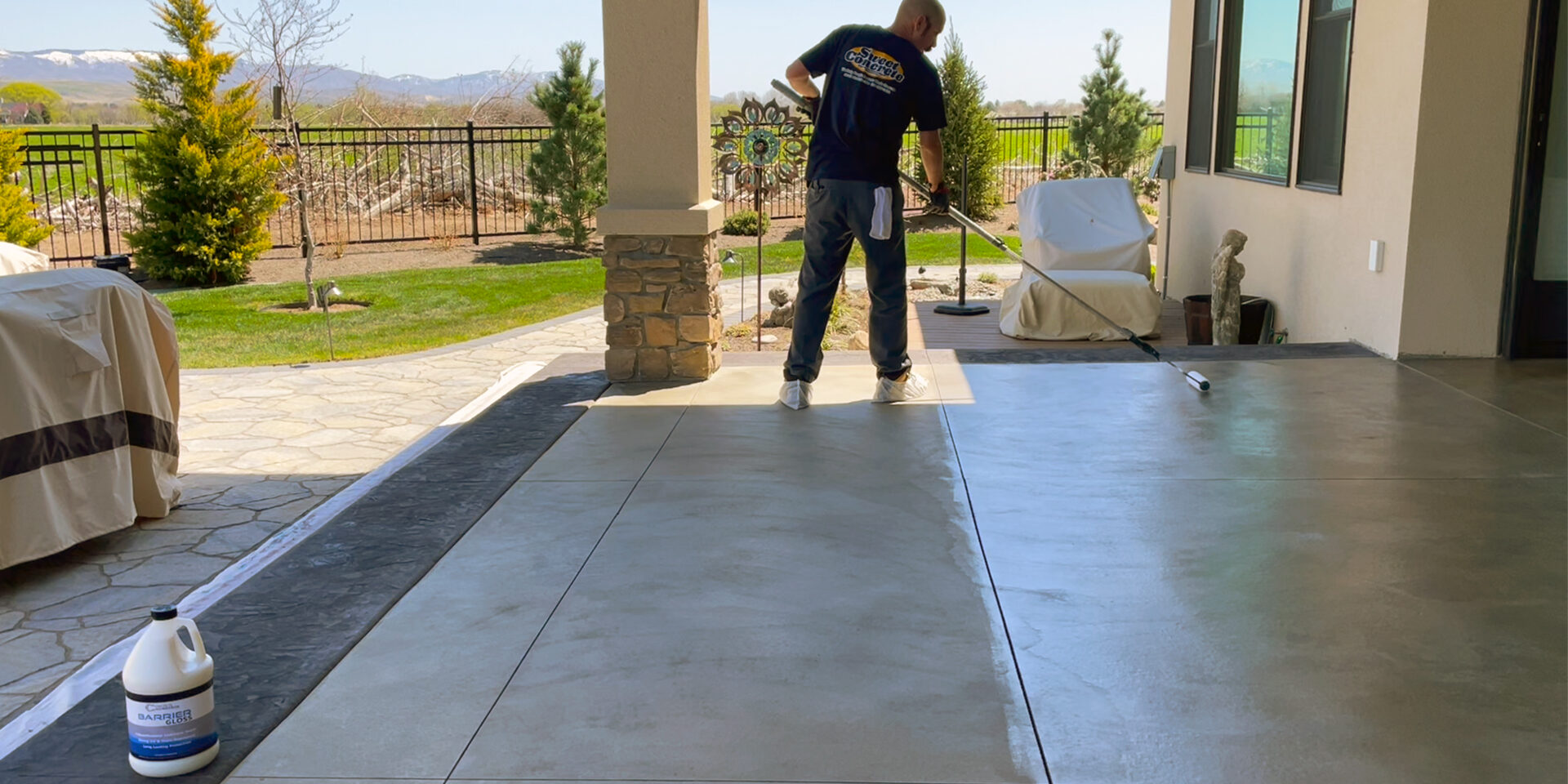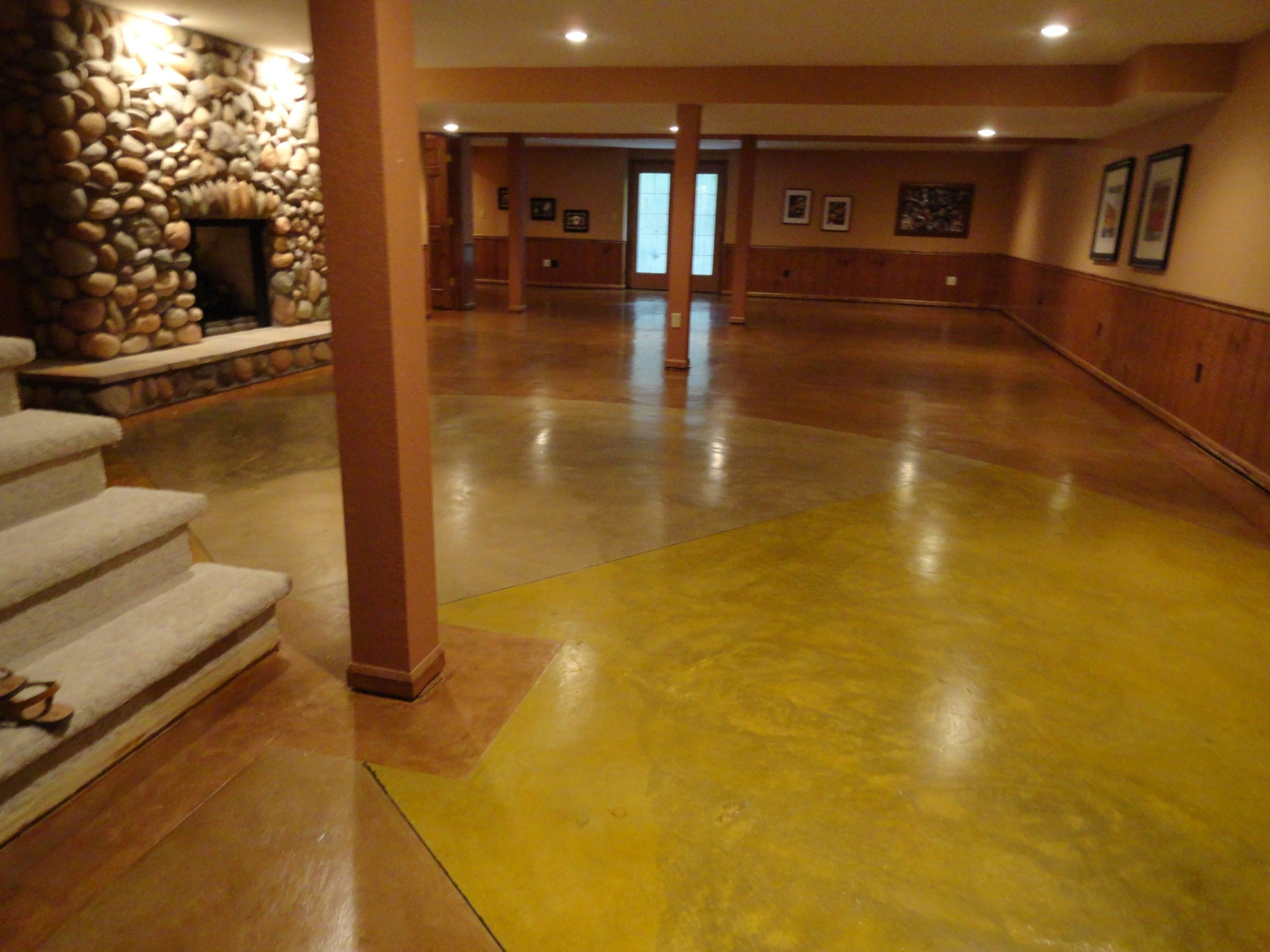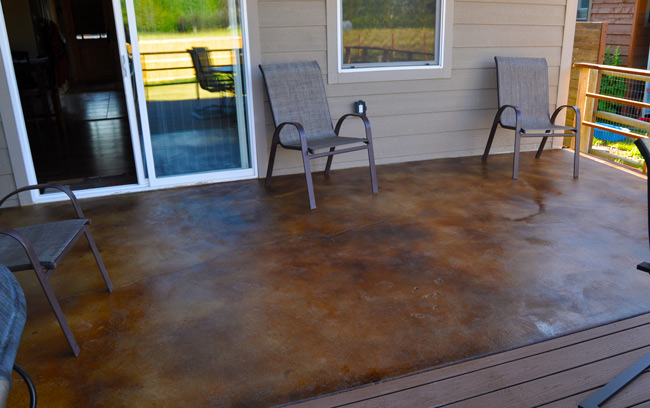Everything About Stained Concrete: A Comprehensive Overview to Its Benefits and Applications
Stained concrete has actually become a popular option for both domestic and industrial rooms. Its capacity to integrate visual allure with practicality makes it a fascinating choice. Various staining methods offer a variety of colors and surfaces, permitting for personalization. Nonetheless, the advantages extend past appearance. Recognizing its applications and upkeep demands is important for any individual considering this functional material. The nuances of stained concrete invite even more exploration.
What Is Stained Concrete?

Staining can be applied to different surface areas, consisting of floors, driveways, and patio areas, making it a versatile choice for both interior and exterior spaces. The treatment can accomplish a variety of appearances, from earthy tones to bold, modern designs. Unlike paint, stained concrete maintains its appearance in time, as it ends up being an essential part of the concrete itself. On the whole, stained concrete works as a reliable approach for transforming common concrete right into aesthetically striking surface areas.
Advantages of Stained Concrete
Stained concrete deals considerable advantages, especially in aesthetic appeal and sturdiness - Stained Concrete Floors Austin Texas. Its vibrant shades and distinct patterns enhance the aesthetic appeal of any kind of space, making it a popular option for both household and business applications. In addition, the long life of stained concrete guarantees that it stays a practical financial investment over time, resisting deterioration
Visual Charm
Among one of the most compelling benefits of making use of stained concrete is its exceptional aesthetic allure. Stained concrete offers a special and versatile appearance that can match numerous layout styles, from modern-day to rustic. The infusion of lively shades and detailed patterns enables homeowners and designers to create tailored surface areas that can enhance the total ambiance of a space. Unlike standard floor covering alternatives, stained concrete can imitate the look of all-natural stone or polished marble, giving an upscale appearance without the associated prices. Furthermore, the glossy surface alternatives can show light, more brightening insides. This adaptability makes stained concrete a popular option for both domestic and industrial applications, where aesthetic influence is extremely important.
Toughness and Longevity
The remarkable aesthetic qualities of stained concrete are enhanced by its exceptional resilience and longevity - Austin Stained Concrete Floors. Stained concrete surface areas are resistant to wear and tear, making them ideal for high-traffic locations both inside and outdoors. Their durable nature suggests they can stand up to harsh climate problems, consisting of severe temperatures, rainfall, and UV direct exposure, without significant deterioration. On top of that, stained concrete requires minimal upkeep contrasted to various other floor covering options, as it does not need frequent sealing or redecorating. This longevity not only minimizes substitute costs however additionally adds to a sustainable structure approach. In general, stained concrete offers an enduring remedy that combines aesthetic allure with sensible advantages, ensuring its value in time
Different Kinds of Staining Methods
Different staining strategies can considerably influence the visual top qualities of concrete surface areas. The three primary methods consist of acid discoloration, which responds chemically with the concrete, water-based discoloration, which provides a broader variety of shades, and overlay staining alternatives that supply a fresh surface. Each technique has distinct qualities and applications that accommodate different style choices and job requirements.
Acid Discoloration Approach
Exactly how can property owners change plain concrete surface areas into visually striking features? One reliable method is acid discoloration, a prominent method that improves the natural elegance of concrete. This process involves using an option of water, hydrochloric acid, and metallic salts to the concrete surface area. As the acid responds with the lime present in the concrete, it creates abundant, variegated shades that resemble marble or stone. Acid discoloration is recognized for its resilience and resistance to fading, making it a resilient choice for both indoor and exterior applications. It is essential to note that the outcomes can vary based on the initial concrete shade and texture. Correct application and sealing are essential for accomplishing the wanted aesthetic and durability
Water-Based Discoloration Method
A preferred option to acid staining, the water-based discoloration strategy provides house owners a flexible way to enhance concrete surfaces. This technique makes use of water-soluble dyes and pigments, permitting a vast array of colors and finishes. Unlike acid stains, water-based discolorations can be put on unsealed concrete and provide a less complicated cleanup process. The outcomes can accomplish an extra consistent look and can be layered to create unique results. In addition, water-based spots are generally less toxic and send out fewer unpredictable natural compounds (VOCs), making them much more eco-friendly. Property owners might value the ability to personalize their concrete surfaces with various shades, enabling imaginative expression while keeping resilience and longevity in their flooring selections.
Overlay Staining Options
Numerous overlay discoloration options exist for homeowners looking to invigorate their concrete surface areas. One popular choice is acid discoloration, which reacts chemically with the concrete to generate rich, variegated shades. Another option is water-based discoloration, supplying a more comprehensive shade combination and much easier application. In addition, concrete overlays can be integrated with patterns for elaborate styles, improving visual appeals. For a much more textured finish, home owners may take into consideration utilizing stamped overlays that mimic all-natural materials like rock or tile. Each method provides special benefits, from longevity Continued to personalization, permitting a customized touch. Ultimately, the option of overlay discoloration depends on the preferred look and the condition of the existing concrete, making certain a rejuvenated and enticing surface.
Applications of Stained Concrete
Stained concrete offers a flexible remedy for various applications, special info boosting both aesthetic appeal and performance. This product is frequently made use of in domestic, industrial, and commercial settings, making it a preferred choice among engineers and developers. In homes, stained concrete can work as elegant flooring or outside patios, supplying a sophisticated appearance while remaining resilient.
In industrial areas, such as retailers and restaurants, stained concrete contributes to a contemporary atmosphere and can stand up to heavy foot traffic. Additionally, stained concrete is significantly made use of in public areas like parks and sidewalks, where its capacity to mimic all-natural stone or various other materials adds visual interest.
Furthermore, stained concrete is perfect for swimming pool decks and driveways, supplying a slip-resistant surface area that is simple to preserve. Overall, the flexibility of stained concrete makes it suitable for various environments, satisfying varied tastes and needs.
Upkeep and Look After Stained Concrete
Correct upkeep ensures the longevity and appeal of stained concrete surfaces. Regular cleansing is essential; making use of a mild detergent and water with a soft-bristle brush assists get rid of dirt and grime without harming the finish. It is advisable to avoid rough chemicals that can remove away the tarnish or sealer.
Securing stained concrete is vital for protection against wetness, discolorations, and use. A top notch sealer needs to be reapplied each to 3 years, depending on the website traffic and i loved this exposure the surface endures. Additionally, attending to spills promptly will avoid staining and discoloration.

Expense Factors To Consider for Stained Concrete Projects
When planning a stained concrete project, budget considerations play a crucial role in identifying the overall price. The expenses connected with stained concrete can differ substantially based on numerous aspects. First, the dimension of the location to be stained directly influences material and labor costs. Bigger rooms will normally call for even more resources. Second, the kind of stain picked-- acid-based or water-based-- can impact prices, with acid discolorations commonly being more costly. Furthermore, the intricacy of the design, including patterns or multiple shades, can boost labor expenses. Preparation work, such as cleansing and grinding the concrete surface area, includes in the first costs as well. The option in between Do it yourself installation and working with an expert service provider will certainly further influence the spending plan. Understanding these elements enables homeowners to make informed economic choices about their stained concrete tasks, ensuring they achieve the wanted visual within their economic ways.
Tips for Choosing the Right Stained Concrete for Your Space
Picking the appropriate stained concrete for a specific space involves mindful reflection of numerous variables past just budget. One need to evaluate the desired use of the area. High-traffic zones might need more sturdy surfaces, while attractive applications can focus on aesthetic appeals.
The color combination is another important aspect; the picked colors must harmonize with existing design and lighting. It's also essential to take into account the surface area structure, as smooth surfaces can improve class, while textured choices may guarantee safety in damp locations.
Regional climate and ecological conditions play a considerable function in the longevity and maintenance of stained concrete, affecting the choice of sealers and finishes.
Lastly, seeking advice from with professionals can offer valuable understandings tailored to specific needs, assuring the selection of the excellent stained concrete that aligns with both performance and style.

Often Asked Concerns
Can Stained Concrete Be Applied Over Existing Flooring?
Stained concrete can without a doubt be used over existing flooring, provided the surface area is steady and effectively prepared. This approach enables a visual upgrade without the need for full elimination of the original floor covering products.
The Length Of Time Does Stained Concrete Last?
Stained concrete can last for years when appropriately preserved. Aspects such as website traffic, environmental problems, and application techniques considerably affect its longevity, with several setups staying lively and undamaged for 10 to thirty years.
Is Stained Concrete Slippery When Damp?
Stained concrete can be unsafe when damp, as the surface might produce a smooth surface. Making use of non-slip additives or textured coatings can reduce this problem, boosting safety without compromising the visual allure of the concrete.
Can I Discolor Concrete Myself, or Should I Hire a Professional?
The decision to discolor concrete directly or work with a specialist hinges on ability degree and project complexity. While DIY staining can save cash, experts assure optimal outcomes, especially for complex styles or huge surfaces.
What Colors Are Offered for Stained Concrete?
The range of shades offered for stained concrete consists of natural tones like browns and tans, vivid tones such as reds and blues, and softer tones like pastels. This palette enables for creative, personalized design choices.